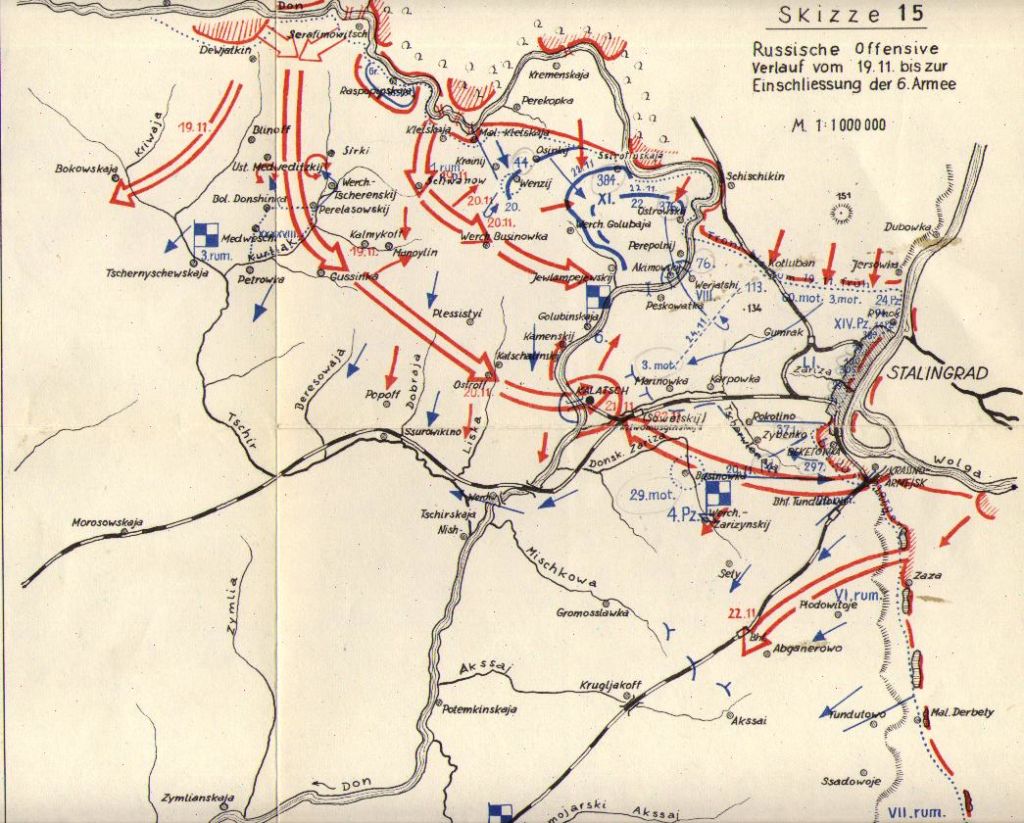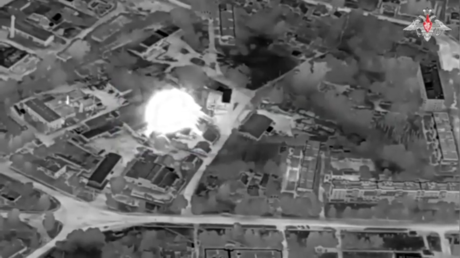The Ukrainian Spring Offensive So Far
The Ukrainian counteroffensive is underway. Don’t get your hopes up. When the American-led coalition went on the offensive against the Iraqi military during the Persian Gulf War of 1990-91, they had complete air superiority. The coalition’s air forces spent over a month bombing Iraqi positions before their ground forces went over the top, facing an Iraqi army that was already severely depleted and cut off from its supply routes. They then carried out an attack on the Iraqi flank, bypassing their main defensive line and striking Iraq’s elite Republican Guard forces directly. The ground attack, and the war, was famously over within 100 hours.
The Ukrainians have not had the advantage of being able to starve the Russians in their trenches, and there is no open flank for them to exploit. Additionally, the Russians have adapted to all the technology thrown at them. The Russians have been destroying 10,000 Ukrainian drones per month. A Patriot missile battery was damaged in Kiev in mid-May, and there are rumors it was completely destroyed. Even if the Ukrainian military receives top-line aircraft such as the F-16, it is unlikely that it can turn the tide. The problem isn’t their pilots as much as their lack of secure runways that are designed to prevent damage. The F-16 also requires a highly skilled maintenance team, and it takes years to train a support staff with all the necessary skills.
There are likewise whispers in the wind that the Ukrainians have lost more soldiers than they are admitting. Regardless of the actual numbers, this war has become one of attrition, and the Ukrainians have lost more soldiers per capita than the Russians. The Ukrainians are sending their best and losing their best. They simply cannot win a war of attrition.
Moreover, the sanctions against Russia have failed. The Russians continue to sell oil and are able to obtain sophisticated components such as microchips. Contrary to some predictions, they have not run out of their Iskander missiles, despite heavy use of them throughout the campaign, and have been able to acquire large numbers of Unmanned Aerial Vehicles (UAVs) from Iran. Moscow is also taking steps towards reorganizing global trade through the use of a new gold-backed currency. Currencies on the gold standard have some disadvantages, but a new global currency will certainly alter worldwide commerce to the West’s detriment.
Ukraine’s military problems
By all appearances, the counteroffensive is going badly, and it is likely that it will end in failure. Ukraine’s structural problems include:
- The Ukrainians may have started their counteroffensive on May 12. This is when they attacked the northern and southern flanks of Bakhmut This maneuver is called a double envelopment. In the five weeks since, the Ukrainians have not made much progress on that front. Even more worrisome is the fact that the Wagner Group’s flamboyant leader, Yevgeny Prigozhin, had stated that the counteroffensive would begin on that date, which if true means that the Russians are receiving good intelligence.
- Ukrainian air defense is lackluster, being arrayed to protect their western cities from drone and missile strikes. Air defense is therefore thin in the forward areas, and Russian drones and helicopters are more or less free to attack the Ukrainian columns while they are still behind the front lines. The Ukrainians have also lost half of their mine-breaching tanks.
- The Ukrainians are attacking several places at once with brigade-sized forces rather than assaulting one weak point with massive forces. This is in contrast to the Soviet counterattack at Stalingrad in November 1942, when they attacked the Axis armies with more than a million soldiers at their two weakest points — those held by underequipped Romanian units — and completely encircled the Germans at Stalingrad within four days.
- The Ukrainians lack ammunition, especially for their air defense and field artillery. During the First World War’s Battle of Cantigny, the American 1st Infantry Division required 200,000 shells simply to take a small village. Ukraine’s current output shells cannot support a similar rate of fire.
The structural problems at the center
When Ukraine gained its independence in 1991, it came with a catch. Its eastern regions are Russian-speaking, are aligned with Orthodox civilization, and have a long history in the Russian Empire. Its western regions are aligned with Western civilization and were once part of the Polish-Lithuanian Commonwealth. The western Ukrainians thus have very negative memories of Russian rule, especially during Soviet times, whereas the eastern territories are more comfortable with Russian rule.

You can buy Greg Johnson’s The Year America Died here.
The anti-Russian insanity in America and Europe clearly provoked Russia. Nevertheless, the Russians attacked a country when it was unnecessary. The United States was not seeking to put nuclear weapons in Ukraine. The causes of this war are complicated, and no party is truly innocent.
The biggest casus belli was the Biden administration’s failure to deter the Russians. Maintaining an independent Ukraine which has the same borders as the Ukraine Soviet Socialist Republic was always a bluff, and the bluff has been called — all the more easily given that the American establishment is so obviously dysfunctional at the top nowadays. President Biden is senile, won the election through suspicious means, and focused primarily on trendy Leftist fads. There is also clear rot within the American military itself. General Mark Milley’s tenure as the Chairman of the Joint Chiefs of Staff has been nothing but a series of failures, including failing to suppress the Black Lives Matter/antifa rioting in 2020, a witch hunt for (white) “extremists” in its ranks, the disastrous withdrawal from Afghanistan, and now the Ukraine morass. This rot has several causes, but the most important is a culture of lying, such as covering up the fact that the US military is fraught with racial problems. Those who cover this up best get promoted. Thus, the highest-ranking officers tend to be liars who believe that it is better to muddle through a problem than tell an important truth about its causes.
The impact of these social issues on the US military can be seen in the decline of its legitimate accomplishments. During the Korean War, American military advisors worked hand-in-glove with the South Korean government to churn out divisions of Korean troops, and those divisions fought valiantly. By the time of the Vietnam War, the American-trained South Vietnamese divisions fought unevenly due to cultural and political circumstances that were beyond the Americans’ control. They were well-equipped by the US, however.
In Ukraine, it is unquestionable that the Ukrainian soldiers are fighting valiantly, but their equipping and organizing is a far cry from what took place in Korea and Vietnam. Consider this recent accounting from the dismal Gen. Milley:
More than 6,000 Ukrainians are being trained right now, at 40 different locations in 65 courses in 33 nations on three continents. Since the beginning of the war, the United States has trained over 11,000 Ukrainians. We are currently training three battalions, a tank battalion, and two territorial National Guard battalions. All in all, international effort has trained almost 60,000 Ukrainian soldiers for this current operation.
This reads like the fluff one finds in an officer evaluation report. This scattered training means that the Ukrainian soldiers return to the front with different ways of doing the same job, depending on where they were trained. 60,000 men isn’t enough, either. Ukraine needs 10,000 artillery pieces and a half-million men simply to surround Bakhmut, as well as a million shells and air superiority.
Their lack of ammunition is astonishing considering the fact that Ukraine is backed by the world’s most industrialized nations, including the United States and Germany. But both nations are suffering considerable industrial hardship. Over the past two decades the German government had adopted an ideological energy policy based on “climate change.” As a result, the German coal industry has declined and all their nuclear reactors have been shut down. The German establishment bet their entire economy on the Nord Stream pipelines, the construction of which altered the balance of power in Europe that facilitated this war in the first place. Now the Nord Stream pipelines are inactive, and Germany’s energy costs have become enormous while factories are shutting down.
The United States has carefully attempted to shield its military-industrial complex from the same neoliberal economic policies that destroyed the Rust Belt, but even so, problems remain. The vast capabilities that America became renown for during the Second World War was supported by thousands of small businesses, an extensive machine tool industry, and an army of skilled industrial workers. Today, all of that is gone. Many of the machine tools that the US still has are old and the production of military equipment is organized in relation to political considerations rather than efficiency. Artillery shells, for example, have their steel cases manufactured in Pennsylvania, which are then filled at a plant in Iowa. There is no single assembly line where raw materials come in at one end and finished ammunition comes out the other, to be loaded onto a waiting transport ship. Every Congressman is now forced to cling to the system that remains, because given the fact that most other types of factories are long gone, the loss of a weapons plant means that an entire district will lose its best-paying jobs — and nothing can replace them.
The US is also losing its technical edge when it comes to weaponry. The Russians have studied America’s performance in its many deployments since the end of the Cold War and developed effective countermeasures. In the 1980s, the F-16s that the US provided to Israel outclassed Syria’s Russian-supplied air defenses. But time marches on. The F-16’s first flight was in 1974, and while its computers, software, and electronic warfare kit are continuously upgraded, its airframe is still nearly five decades old. It is now outclassed by the Russian Su-35 Flanker and PAK-FA fighters. The fact that American’s top-line weapons systems were on the verge of obsolescence became apparent in 2018, when half the Tomahawks fired by the US in an attack on Syria were shot down by Syria’s Russian-made surface-to-air missiles.
Besides this, the US can only give the export versions of its military equipment to the Ukrainians, given that if it provides its most advanced equipment, it has a very high chance of winding up in Russian hands.
Poland’s role
The one nation in Europe that has remained implacably hostile towards Russia throughout this war is Poland. The Poles have a vivid memory of Russian misrule. Given that it lies between two great powers, Germany and Russia, there are many times that they have made deals at Poland’s expense. The Nord Stream 2 pipeline was one of them. Poland, however, was once a vast empire in its own right. Belarus and western Ukraine were part of the Polish-Lithuanian Commonwealth. The tragedy of Ukraine’s relationship to both Russia and Poland during the period of the Commonwealth is explored in Nikolai Gogol’s novel Taras Bulba. The situation in Ukraine is therefore nothing new.

You can buy Greg Johnson’s New Right vs. Old Right here
Poland has a chance to come out ahead at the end of this war, but its situation is precarious. The Baltic Pipe, which brings in natural gas from the North Sea, was activated in September 2022, one day after the bombing of the Nord Stream pipelines. Polish energy needs are thus secure for the time being.
Also, Poland is now in an advantageous position when it comes to Ukraine’s trade. Ukraine has lost part of its coastline to the Russians, and its vast supplies of grain must now be shipped out through Odessa. Ships going to and from the port must run the Crimean gauntlet, however, as well as pass through the Bosporus and Dardanelles. But a secondary way to ship Ukraine’s vast supplies of grain to the global market is through Poland. For the time being there are problems preventing this from happening, but if it is realized, Poland will effectively control Ukraine’s grain output. This would turn Ukraine into a colony of Poland in the same way that the Dakotas are economically dependent upon Minneapolis’ mills and granaries.
Poland therefore stands to benefit if the Russians are driven from Ukraine entirely, which would keep their mortal enemy at bay for at least a generation. They could likewise benefit if the conflict ends with Russia retaining the territory it currently holds. But it still needs a counterweight to any problems arising out of Western Europe, and this makes Polish influence on American foreign policy essential.
Two people who have been successfully influencing the American establishment in Poland’s favor are Anne Applebaum and her husband, Radosław Sikorski. I keep abreast of what Applebaum writes in The Atlantic and elsewhere because she wrote an outstanding series of books about Communism in Eastern Europe which confirm everything that Whittaker Chambers and others of the “radical Right” were saying at the start of the Cold War. Peter Brimelow recently wrote of Donald Trump’s politically-motivated indictment:
Any reader of Anne Applebaum’s Iron Curtain: The Crushing of Eastern Europe 1944-1956 will instantly recognize Donald J. Trump’s federal indictment today: this politicized prosecution of opponents over spurious technicalities was key to the Communist takeover of Eastern Europe in the late 1940s. (For reasons that bear analysis, Applebaum has become a fanatical Never Trumper and doesn’t seem to have noticed this parallel.)
Applebaum is ethnically Jewish, and one might think that she is therefore an Israel-first neoconservative in the same mold as Madeline Albright and Paul Wolfowitz. But she isn’t. Additionally, while in The Atlantic she comes across as a scolding Yankee schoolmarm akin to Julia Ward Howe, she is most certainly not a Yankee. She is rather using her considerable skills to assist her husband in advancing Polish interests by influencing Americans. America’s foreign policy is determined by foreign pressure groups — and she is pressuring very well.
Polish national aspirations are not necessarily bad, but they aren’t aligned with America’s national interests, either. Applebaum must therefore be a Never Trumper, because Trump’s America-first policies relate to the way in which the British lost their empire by issuing an unsolicited war guarantee to Poland in 1939. Relations between Germany and Poland are only calm at present because of American influence. Without the Yanks, they’d be hot, angry, and toxic. The bombing of the Nord Stream pipelines has severely harmed German industry and could bring about considerable problems in Europe if Germany is unable to resolve its energy crunch. Thus, America first is bad for Poland’s international ambitions.
The war goes on. Sorrows don’t come in single spies, but in battalions. Serious military deterrence goes a long way towards keeping these lachrymose battalions out, but the American Empire of Nothing has lost its ability to deter.
* * *
Like all journals of dissident ideas, Counter-Currents depends on the support of readers like you. Help us compete with the censors of the Left and the violent accelerationists of the Right with a donation today. (The easiest way to help is with an e-check donation. All you need is your checkbook.)
For other ways to donate, click here.







